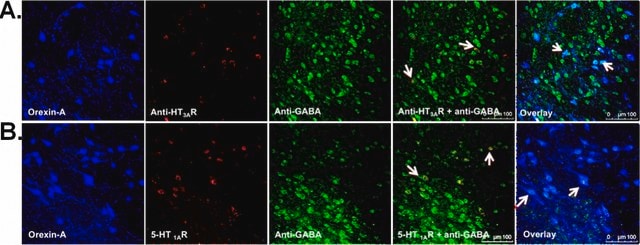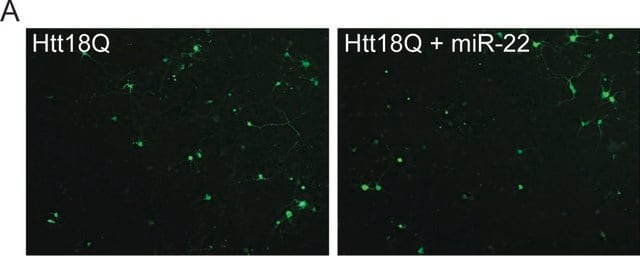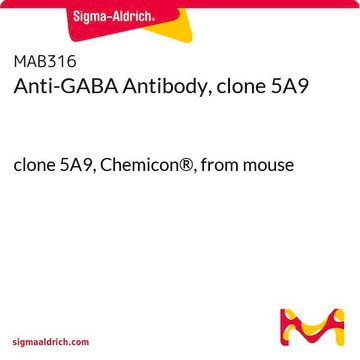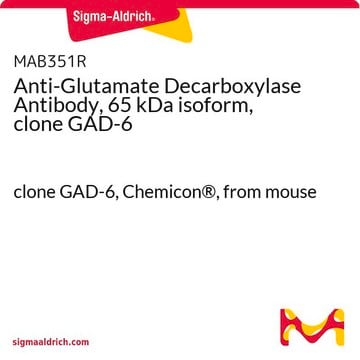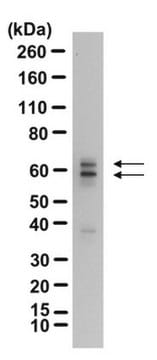A0310
Monoclonal Anti-GABA antibody produced in mouse
clone GB-69, ascites fluid
Synonym(e):
GABA Antibody - Monoclonal Anti-GABA antibody produced in mouse, Gaba Antibody Sigma, Anti-γ-Aminobutyric acid
About This Item
Empfohlene Produkte
Biologische Quelle
mouse
Qualitätsniveau
Konjugat
unconjugated
Antikörperform
ascites fluid
Antikörper-Produkttyp
primary antibodies
Klon
GB-69, monoclonal
Enthält
15 mM sodium azide
Speziesreaktivität
wide range
Methode(n)
dot blot: suitable
immunofluorescence: suitable
immunohistochemistry: 1:100-1:200 (Using heat-retrieved formalin-fixed, paraffin-embedded human brain and/or cerebellum sections.)
indirect ELISA: suitable
Isotyp
IgG1
Versandbedingung
dry ice
Lagertemp.
−20°C
Posttranslationale Modifikation Target
unmodified
Angaben zum Gen
mouse ... Gabra1(14394)
Allgemeine Beschreibung
Monoclonal Anti-GABA (mouse IgG1 isotype) is derived from the hybridoma produced by the fusion of mouse myeloma cells and splenocytes from an immunized mouse. The antibody does not cross react with L-α-aminobutyric acid, L-glutamic acid, L-aspartic acid, glycine, δ-aminovaleric acid, L-threonine, L-glutamine, taurine, putrescine, L-alanine and carnosine. However, weak cross-reaction is observed with β-alanine and ε-aminocaproic acid.
Immunogen
Anwendung
Biochem./physiol. Wirkung
Physikalische Form
Haftungsausschluss
Not finding the right product?
Try our Produkt-Auswahlhilfe.
Lagerklassenschlüssel
10 - Combustible liquids
WGK
WGK 3
Flammpunkt (°F)
Not applicable
Flammpunkt (°C)
Not applicable
Analysenzertifikate (COA)
Suchen Sie nach Analysenzertifikate (COA), indem Sie die Lot-/Chargennummer des Produkts eingeben. Lot- und Chargennummern sind auf dem Produktetikett hinter den Wörtern ‘Lot’ oder ‘Batch’ (Lot oder Charge) zu finden.
Besitzen Sie dieses Produkt bereits?
In der Dokumentenbibliothek finden Sie die Dokumentation zu den Produkten, die Sie kürzlich erworben haben.
Kunden haben sich ebenfalls angesehen
Unser Team von Wissenschaftlern verfügt über Erfahrung in allen Forschungsbereichen einschließlich Life Science, Materialwissenschaften, chemischer Synthese, Chromatographie, Analytik und vielen mehr..
Setzen Sie sich mit dem technischen Dienst in Verbindung.

